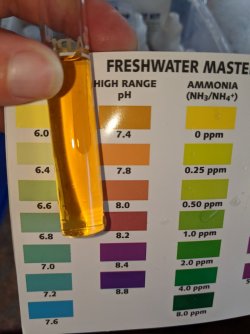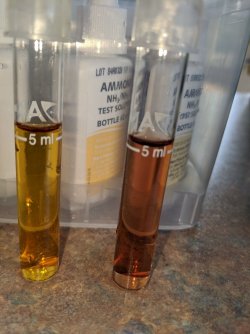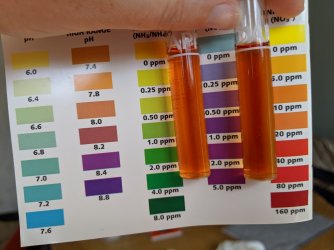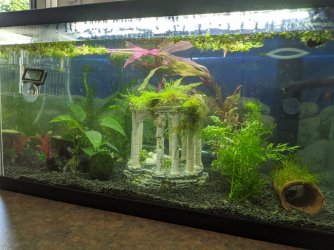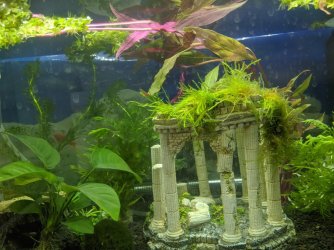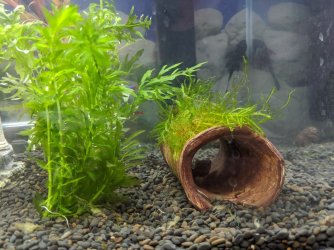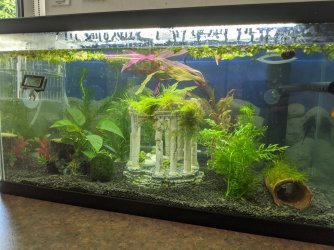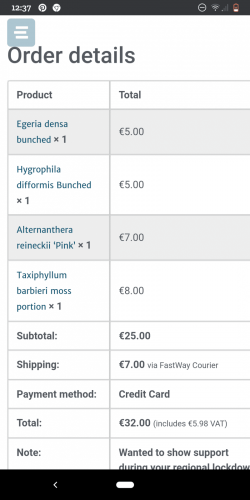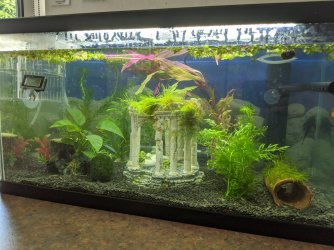I find it tricky to read the API Master Kit but is it ok that my nitrates are so high but nitrite & Ammonia low? Is that normal for the fish in Cycle?
Why is my CO2 zero with plants?
Why is my fresh tap water showing lower PH than tank water?
I'm doing daily 75% water changes and have Anubis, Salvinia & moss ball by way of plants.
Fish in Cycle - 3 Platy adults, 9 platy fry, 2 bristlenose Plecos, 4 neon tetra, 1 Molly (I know stocking is a mess but I'm addressing ICH/cycle issue first and blame everything on LFS)
Tank is 16 US Gallon/58 litres 24in/60cm long
Temp 30.5
Ammonia looked about 0.3
Nitrate was close to 0
Nitrate was about 30
PH 8
GH 15
KH 23
(Below is from tetra strip)
Chlorine 0.3
CO2 0
Why is my CO2 zero with plants?
Why is my fresh tap water showing lower PH than tank water?
I'm doing daily 75% water changes and have Anubis, Salvinia & moss ball by way of plants.
Fish in Cycle - 3 Platy adults, 9 platy fry, 2 bristlenose Plecos, 4 neon tetra, 1 Molly (I know stocking is a mess but I'm addressing ICH/cycle issue first and blame everything on LFS)
Tank is 16 US Gallon/58 litres 24in/60cm long
Temp 30.5
Ammonia looked about 0.3
Nitrate was close to 0
Nitrate was about 30
PH 8
GH 15
KH 23
(Below is from tetra strip)
Chlorine 0.3
CO2 0


